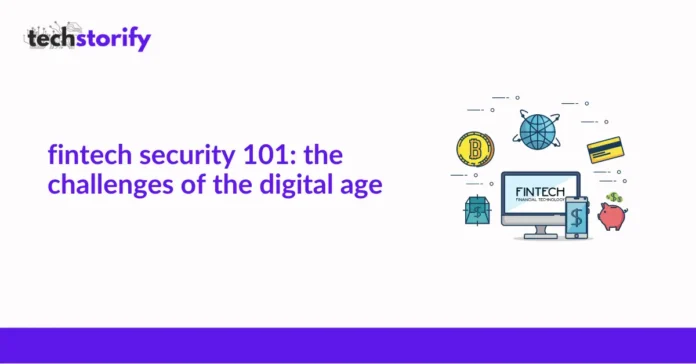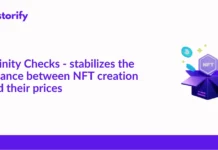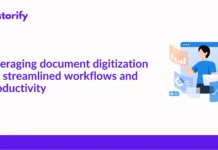The buzzword that seems to keep on giving over the past decade, fintech, revolutionized the financial industry by creating new, never-before-seen benefits for convenience-oriented customers.
Part of the fintech industry’s success is the main element, aka, newly emerging technology-driven startups.
These players introduced customers to new financial services and pushed the world one step closer to its digitized, cashless version.
But all good comes in line with a darker side, especially when it comes to technology and cybersecurity.
The innovations have their own price, presenting many security risks and challenges for fintech businesses.
So what are we waiting for? Let’s jump right into the main challenges and tips relevant to every user and business owner today.
Contents
Why Do You Need to Secure Your Fintech?
According to recent estimates, the number of fintech businesses has doubled in the last few years, reaching a total value of $180 billion.
Taking this into account, it’s essential to stress the cybersecurity risks, which, if not taken seriously, can instantly turn into another statistical number in cybercrime.
At this point, we can establish some key takeaways:
- Companies need to adopt a proactive approach. The mindset of “This won’t happen to me” won’t protect anyone from criminals and their malicious attacks.
- It’s vital to know who you’re up against, meaning that organizations need to be aware of the attackers’ techniques, as well as their vulnerabilities.
- Financial loss is obviously the main fair for businesses that become victims of data breaches. Unfortunately, the package is filled with reputational loss as well.
That said, the latest calculations show that cyberattacks resulted in a loss of $6 trillion for the global economy.
Unfortunately, specialists speculate that the numbers will rise and most likely reach $10.5 trillion by 2025.
These numbers show organizations and customers the vital part of security in fintech, which is an integral part of preventing fraud and cyberattacks.
The Growing Security Challenges in Fintech
The challenging landscape of fintech pushes businesses to create a multi-layer security system.
That means it’s essential to add more layers of protection to ensure that the organization can deal with various security threats.
Similar to traditional banks and their highly secured vaults, fintech security means that its services need to be protected in the same way, except using digital vaults.
Remember that it takes only one vulnerability to breach the whole system.
To learn more about the fintech landscape, check out the list of the most common security challenges today.
-
Payment Security
Lending, insurance, banking, and many more industries define today’s fintech scene. But what do they have in common?
Fintech services all have money flow and are best known for users who are looking for convenient ways to make payments.
That’s why the main challenge regarding payments in fintech is to find the balance between convenience and security.
To achieve this goal, fintech players must have strict rules and follow regulations to safeguard their customers’ transactions, privacy, and data.
-
Public Cloud Services
Even though this one’s pretty obvious, it seems that some fintech organizations keep making the same mistake, which is using a public cloud.
If you choose this strategy, that means you’re risking your company’s data and opening a door for hackers to attack.
Even if this is a cheaper option, that doesn’t mean it’s better.
Instead of high-risk public services, business owners need to develop a private cloud server and protect sensitive information.
-
Blockchain Technology Vulnerabilities
Over the last few years, blockchain has stormed the market and gained huge interest from the public.
Naturally, since crypto and other digital assets are volatile, they’re considered to be a risky investment.
At the same time, blockchain allows users to complete transactions without leaving a trace behind.
This type of anonymity is both alarming and convenient for its users. While it promises a new level of security, like many technologies, it has its disadvantages.
The more technological solutions are put together into a fintech system, the more protection layers you’ll need to prevent possible cyberattacks.
Consequently, defining and implementing security controls helps stay away from potential security breaches.
-
Verification Measures
Once again, this is where fintech organizations need to find a way to ensure security without compromising on user experience.
Like traditional banking, fintech apps provide financial services that require user authentication.
That means before registering to a fintech platform, users need to verify their identities for security reasons.
This way, fintech companies ensure that the people that are gaining access to their services and important data have good intentions, aka aren’t involved in money laundering or terrorist financing or aren’t using a fake identity to conduct crimes.
Biometrics, two-factor authentication, and code-generating apps are some common examples of how fintech companies establish a trusted user verification system.
-
Audits and Constant Monitoring
Maintaining security isn’t easy. That’s why it’s important to use contracted expert services that would help safeguard the fintech business by conducting ongoing monitoring.
Constantly assessing the risks helps detect threats in real-time. Very often, fintech companies choose AI-powered tools, such as Business Verification, to screen vendors automatically as part of their auditing procedures.
You wouldn’t want to partner with a company that’s involved in money laundering? Well, the answer is obvious.
Final Words
It seems that the fintech bubble won’t burst anytime soon. Raising awareness and choosing the right tools help maintain a clear fintech security strategy.
While cybercriminals are getting wiser and harder to detect, more businesses are choosing reliable, AI-powered tools to conduct monitoring services and help review information more efficiently.
After all, this is what modern fintech is all about.













